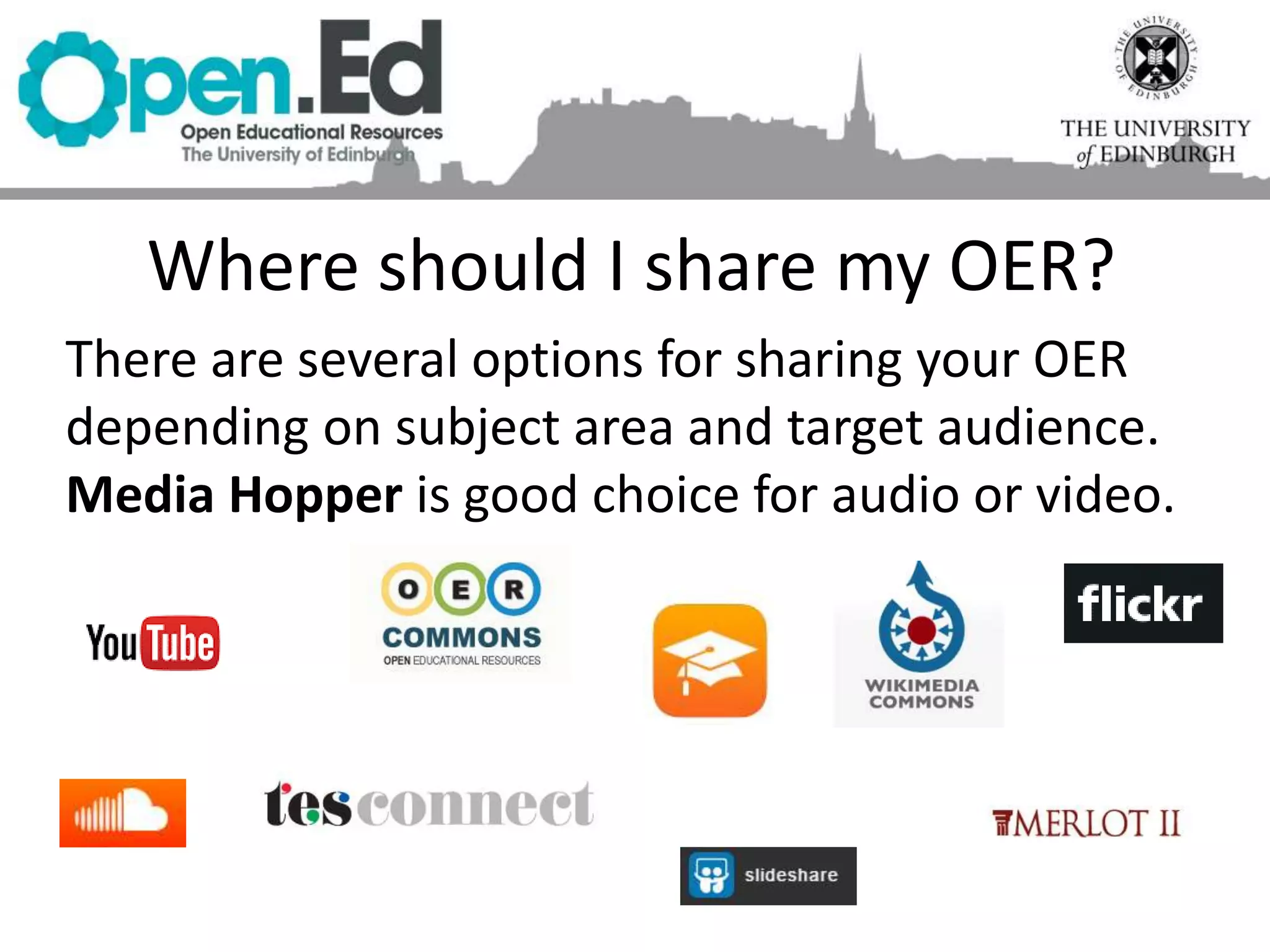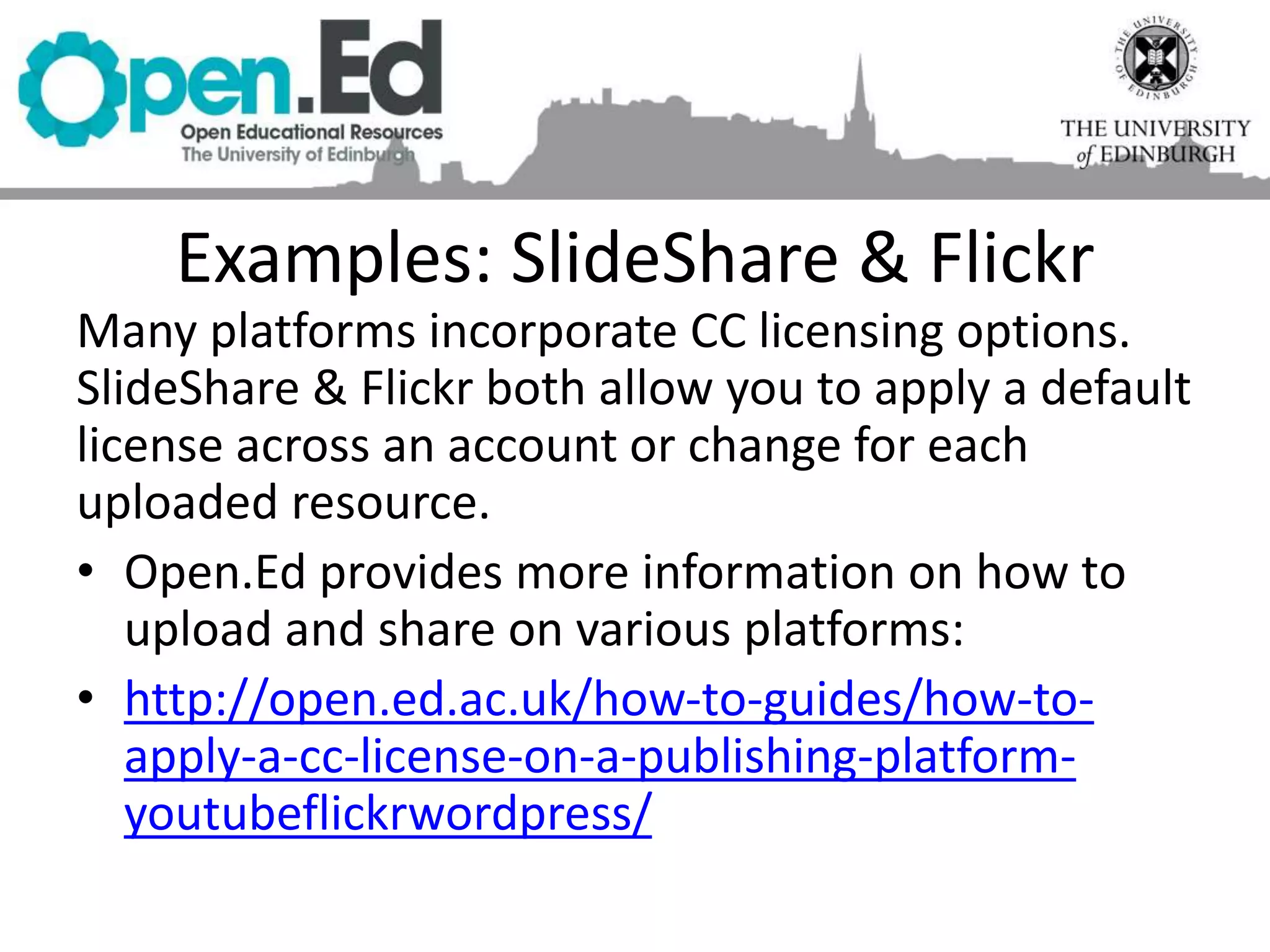This document provides information about open educational resources (OERs) and Creative Commons licenses. It defines key terms like intellectual property, copyright, and open licenses. It explains that OERs are freely available digital resources that can be used for teaching and learning under an open license. The document discusses what OERs are and are not, provides examples of Creative Commons licenses, and outlines the University of Edinburgh's support for creating and sharing OERs. It also includes activities for creating an OER infographic while properly attributing any images using Creative Commons licenses.

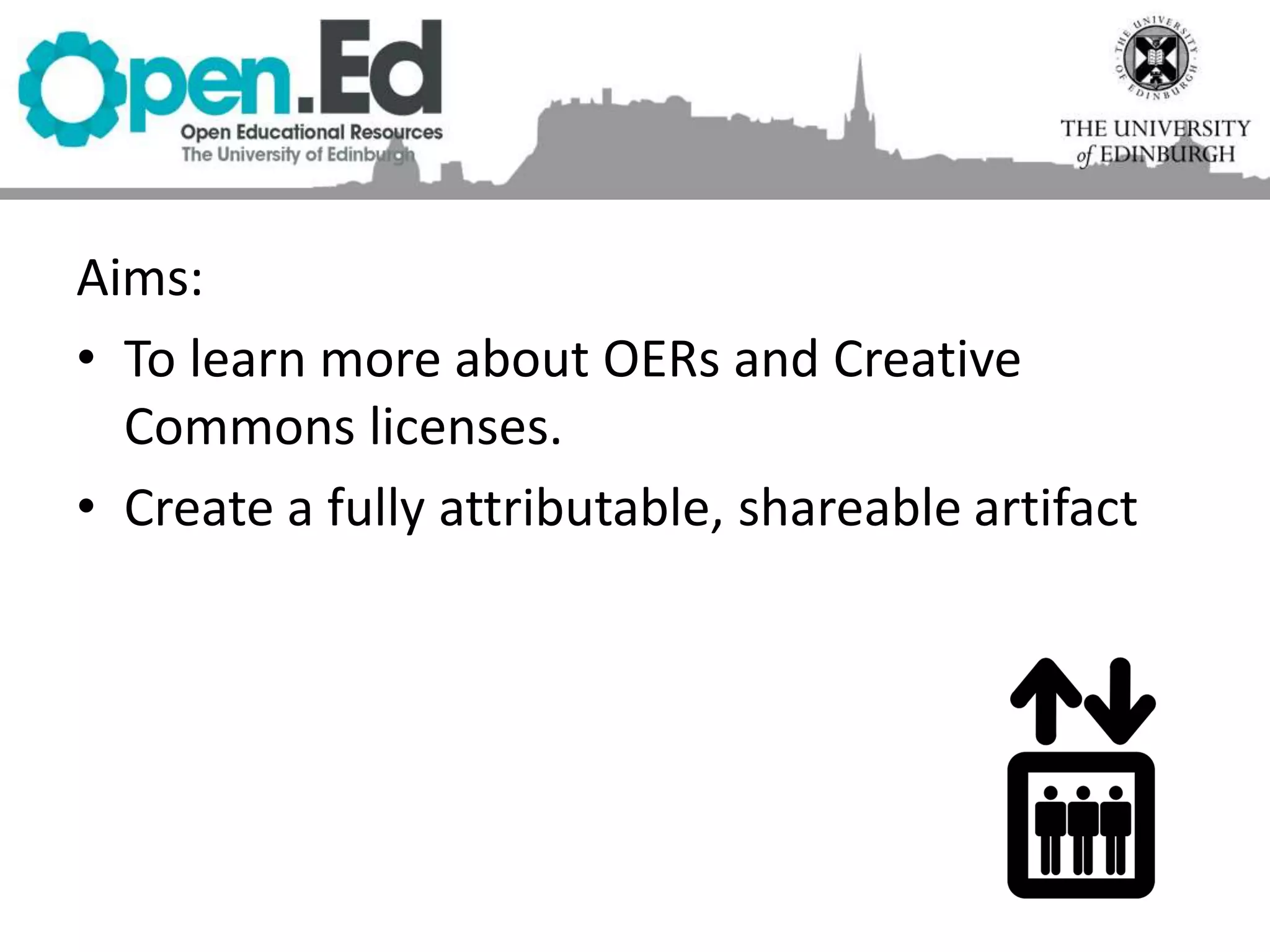

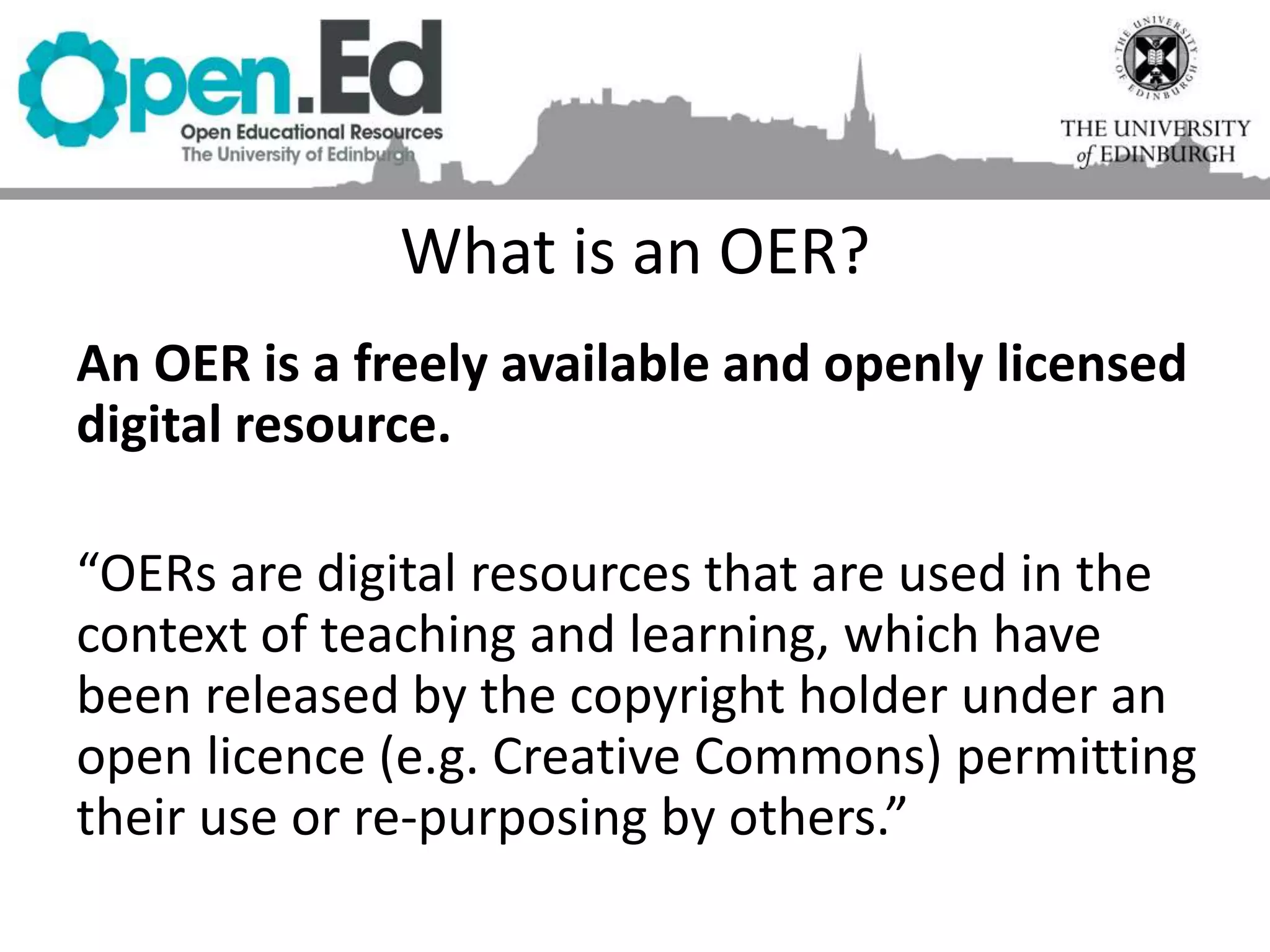

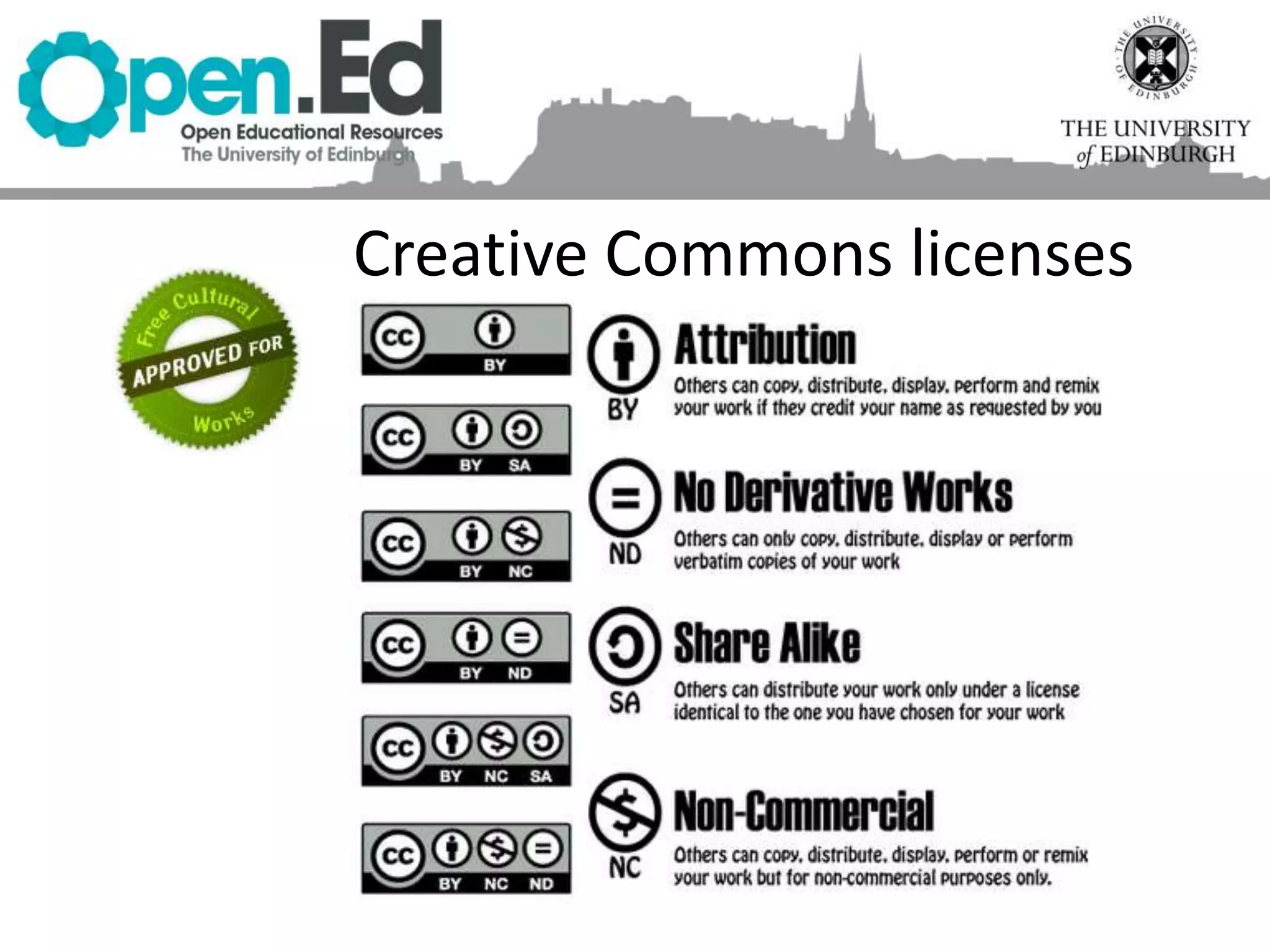
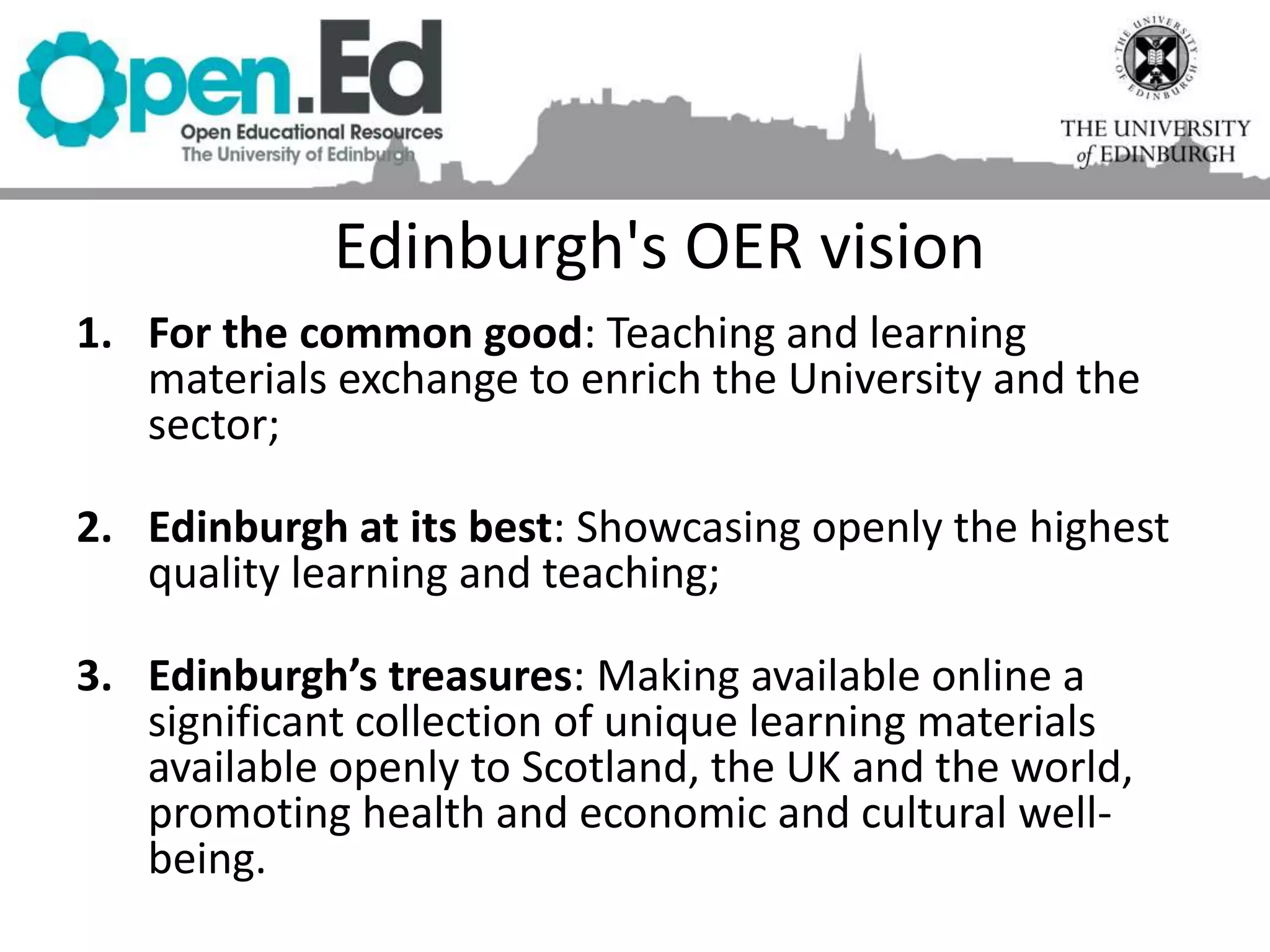
![What our guidelines say
OER aligns with the University’s mission
“Use, creation, and publication of OERs is consistent with the
University’s reputation, values and mission to ‘Make a significant,
sustainable and socially responsible contribution to Scotland, the
UK and the world, promoting health and economic and cultural
wellbeing.’”
Everyday teaching & learning material exchange
“It is expected that OERs used, created or published by individual
staff and students will normally be single units or small collections
[...] rather than whole courses.”](https://image.slidesharecdn.com/oleopenresourcespractical-160526155302/75/Open-Resources-for-Open-Presentations-8-2048.jpg)
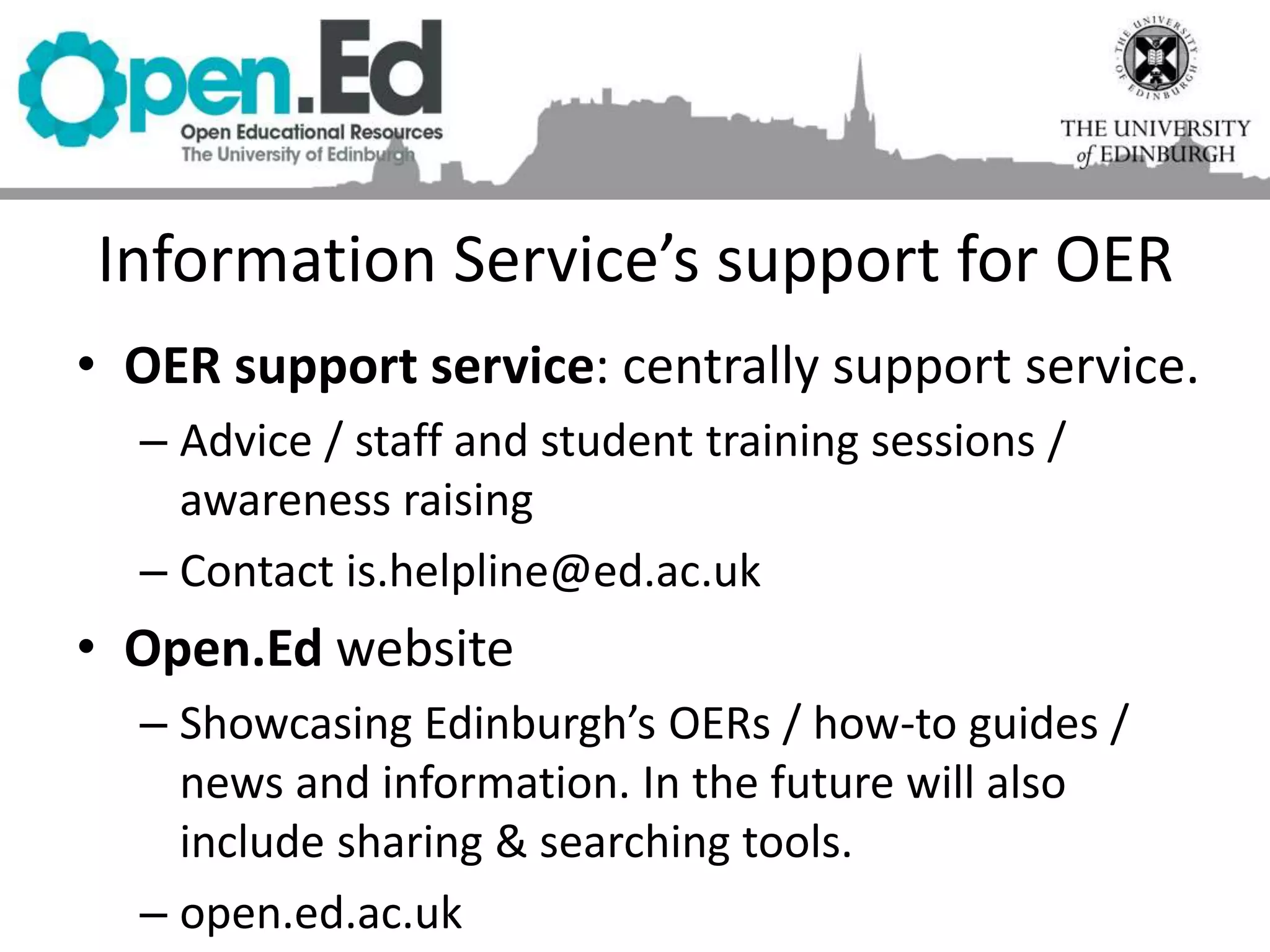
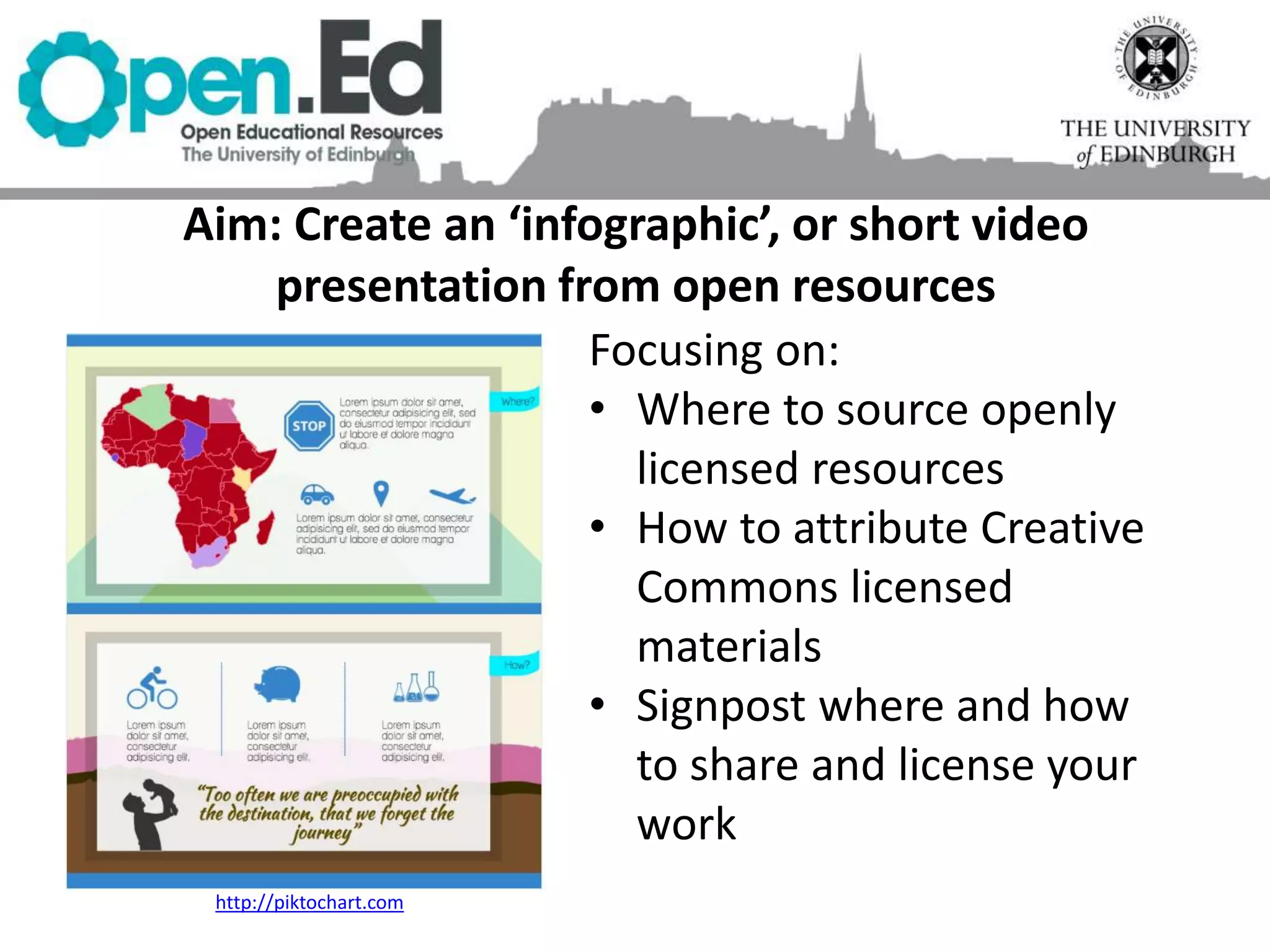
![Activity 1: What are the three most important
things for an effective online learning learning
environment?
By AIGA [Public domain], via
Wikimedia
• Note down three short phrases or
words that describe the things you
have chosen.
• Note: the purpose is to find things
we can illustrate visually.
• Feel free to discuss your thoughts
on this week’s discussion board.](https://image.slidesharecdn.com/oleopenresourcespractical-160526155302/75/Open-Resources-for-Open-Presentations-11-2048.jpg)

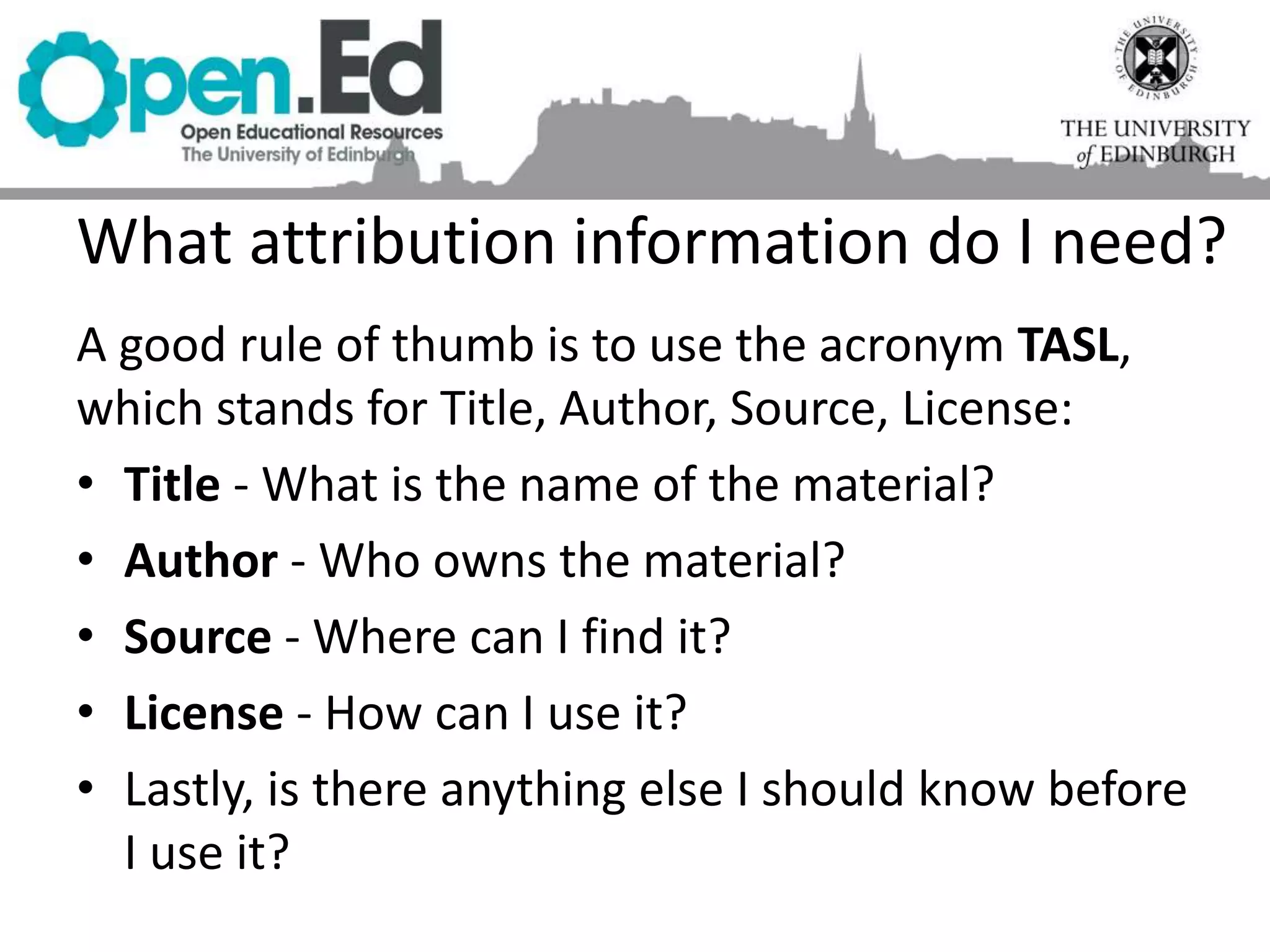
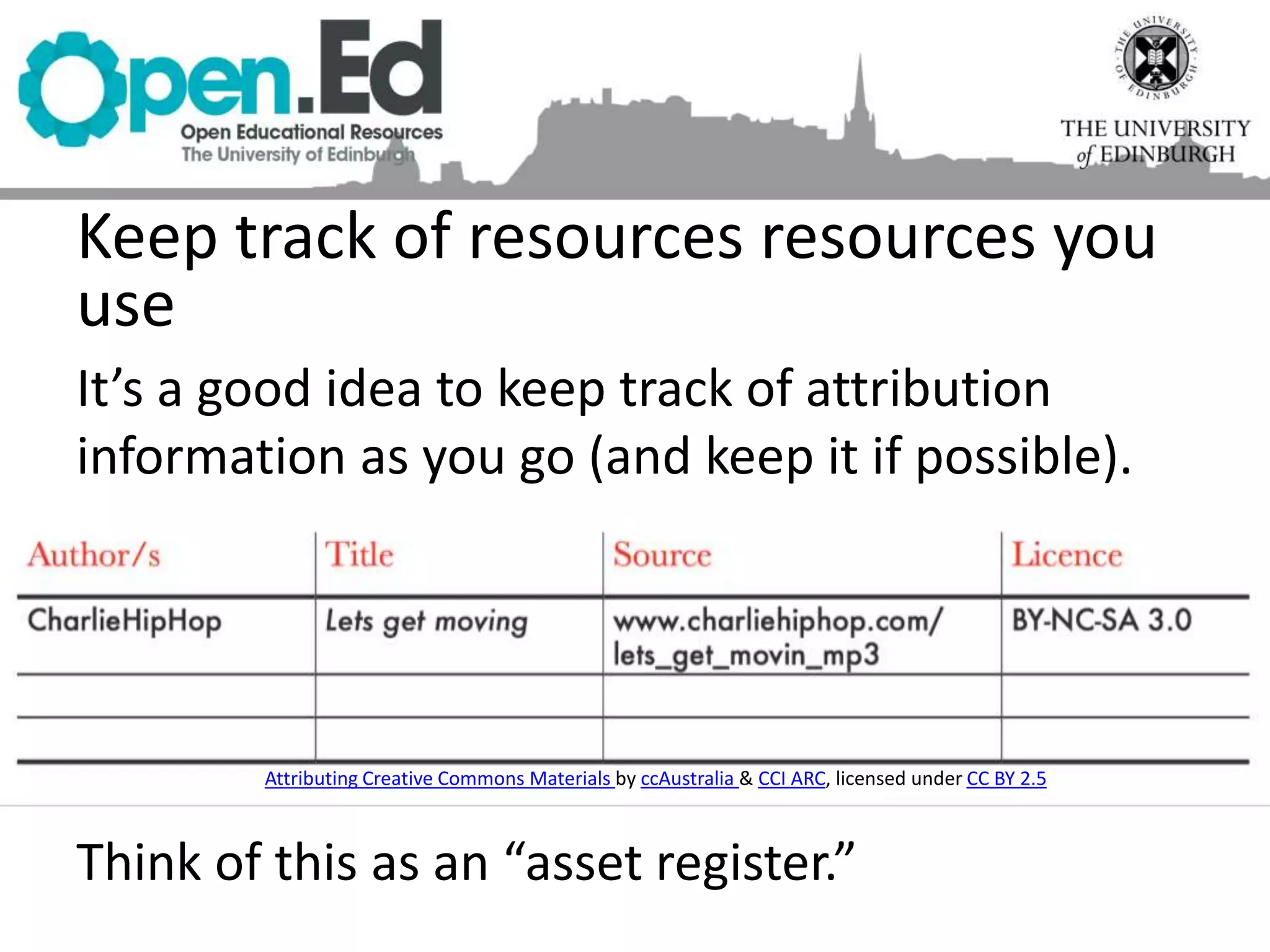


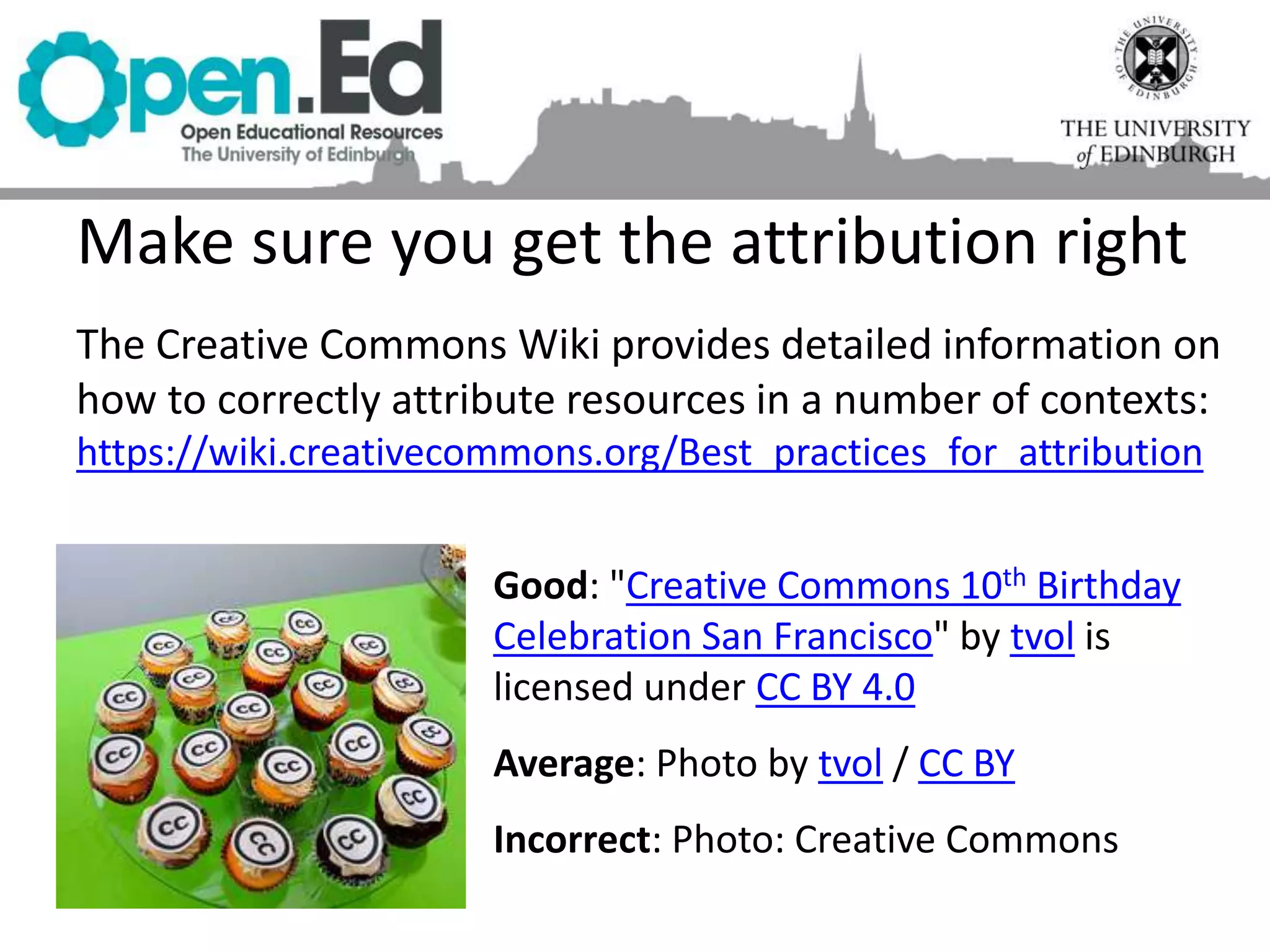

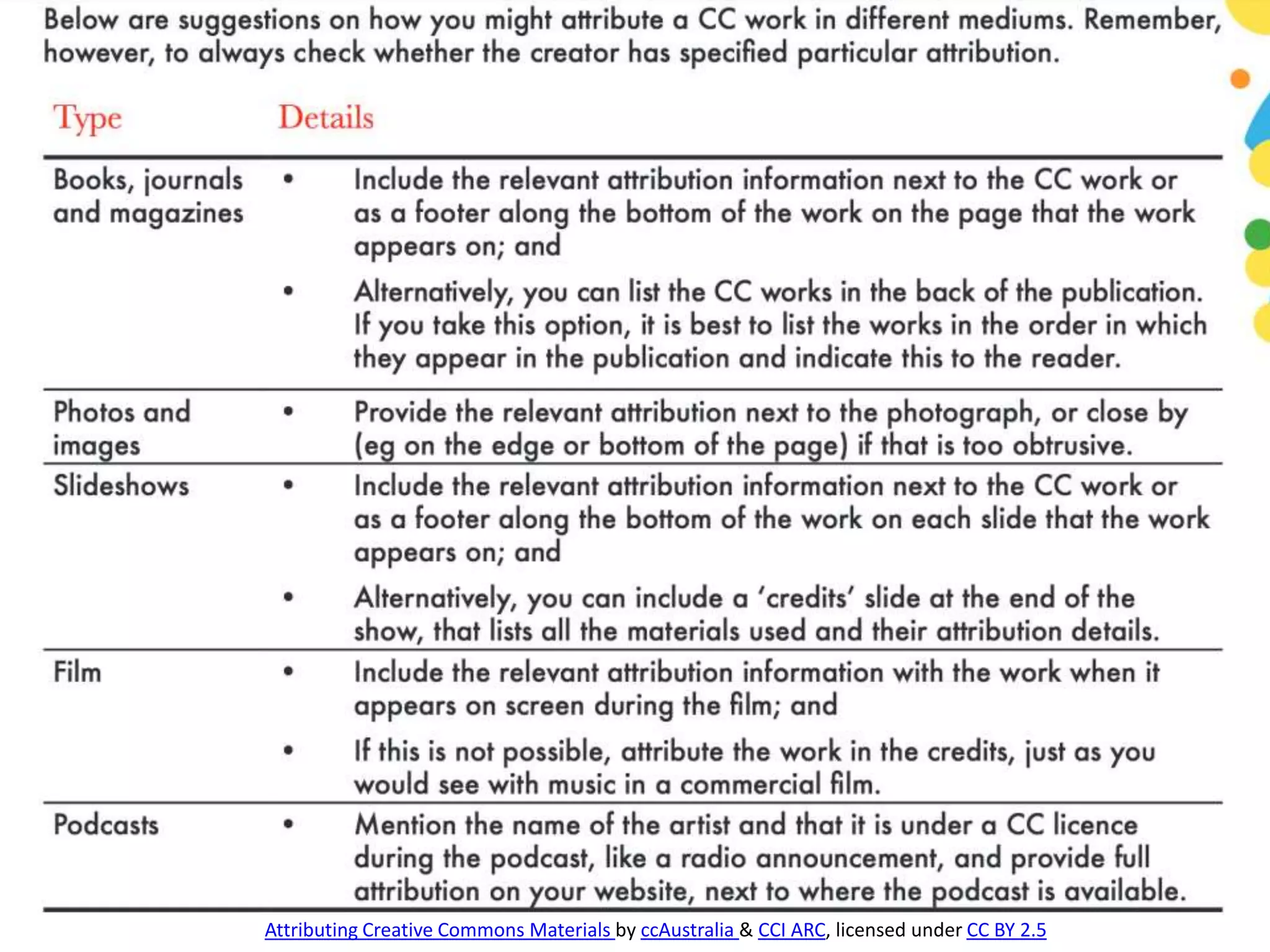
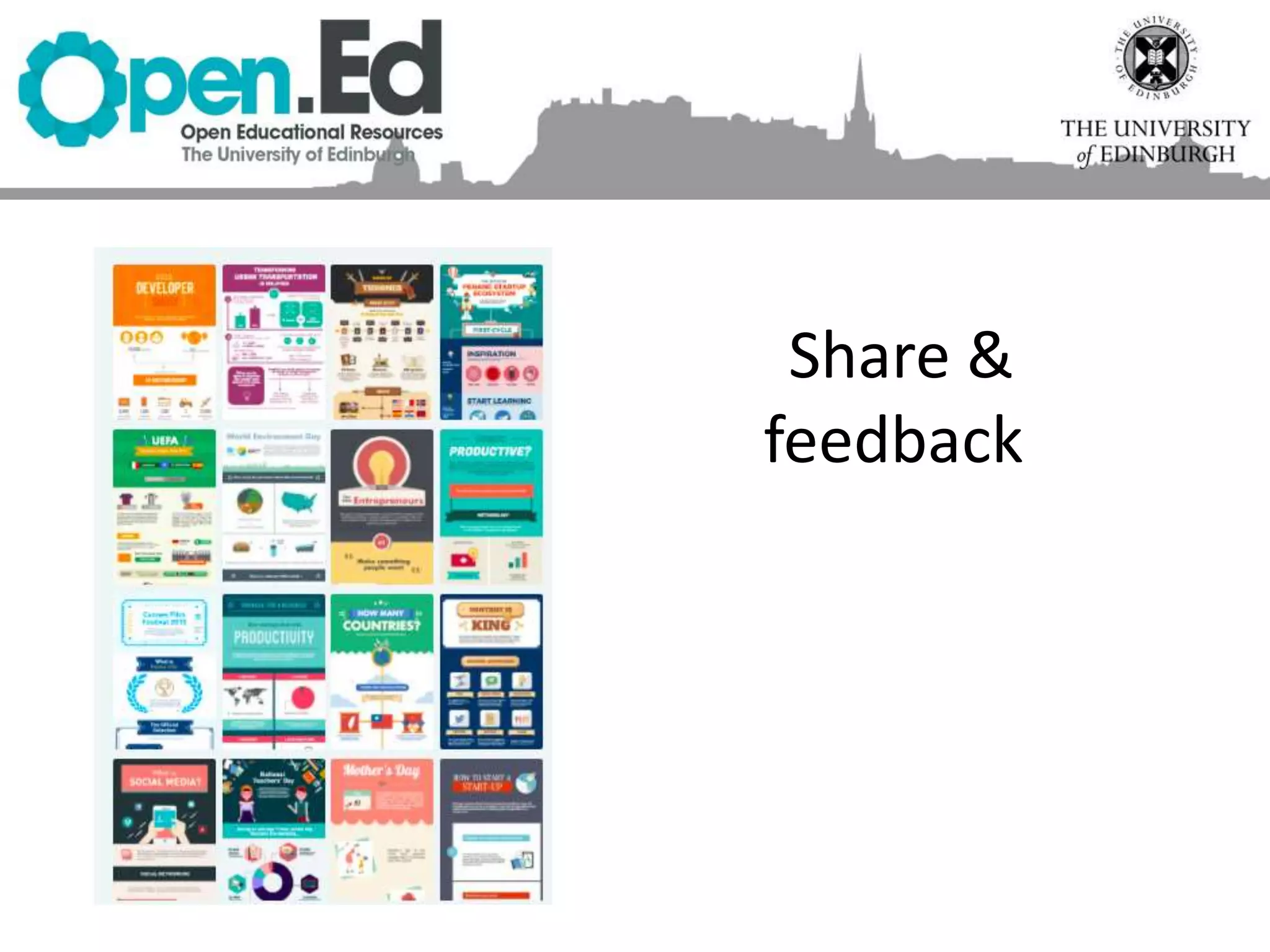
![Sharing OERs
• Ensure that the material is your own work, or contains only openly
licensed work shared under the agreed terms. The copyright service will
be able to help if you are unsure about copyright issues
(copyright@ed.ac.uk)
• Choose the most appropriate license for your material. Many platforms
help you to choose and generate a license in the upload workflow (Media
Hopper, Flickr, YouTube, Vimeo, etc.). The Creative Commons website
license chooser is a useful tool for generating custom HTML license code:
http://creativecommons.org/choose/.
• The copyright owner(s), author(s), date and Creative Commons licence
applied should be visibly attributed. The copyright owner will normally be
the University of Edinburgh for OERs created at the University:
© [Author Name], University of Edinburgh 2016 CC BY](https://image.slidesharecdn.com/oleopenresourcespractical-160526155302/75/Open-Resources-for-Open-Presentations-21-2048.jpg)
